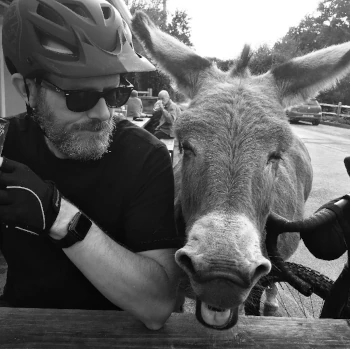Switching desktop Linux from Debian to Fedora
Last week I switched the operating system on my daily driver (Lenovo ThinkPad T14s) from Debian 12 to Fedora 40.
About 2 years ago I tried Fedora 36 and I was really impressed by it, but ultimately I went back to using Debian pretty quickly. I have been seriously thinking about making the switch to Fedora ever since. If you were to ask my wife about the speed at which I operate, she would probably say that 2 years is a very short amount of time for me to make a decision and action it. Seriously though, I would not class myself as a distro hopper and I have been using Debian as my desktop OS for a long time, so making a decision like this is not something to be taken lightly.
Why switch?
My reasons for the switch are pretty simple, I am a GNOME user and I want the best out-of-the-box GNOME experience with the latest goodies that the GNOME developers are providing. The Debian developers do a great job at packaging GNOME, but having kept an eye on the Fedora developer's efforts over the last couple of years, I think they do an equally good job but have the ability of being able to move faster with 2 releases per year.
As a real-world example of how it benefits me to be using the latest GNOME desktop; I have been keeping a Windows machine on my home network that I can access via headless RDP. I only really need access to the web browser on that machine and I would much prefer it not to be running Windows. The latest GNOME desktop allows for easy set-up of headless RDP, so I have now replaced Windows on that machine with Fedora and headless RDP connections to that machine work great. To be fair, I could have waited for the next version of Debian for the same feature to become available, but with all the Microsoft AI nonsense that is currently happening, I really wanted to get that Windows installation off of my network sooner rather than later.
Another real-world example; several of the machines I use have NVIDIA hardware, the latest GNOME releases feature improved NVIDIA/Wayland support that fixes graphical glitches when using the latest NVIDIA driver. It is trivial to install the latest NVIDIA drivers under Fedora. Again, I could wait for the next version of Debian to be released, but I have found NVIDIA/Wayland support under Debian to be less than stellar in the past and it is not guaranteed this will improve with the next release.
How the switch went
For anyone who has been using desktop Linux for a long time, switching from one distro to another is not actually too difficult. I have a list of software titles/tools that I use and all them are available on both Fedora and Debian. Also, I opt to use Flatpak to install most of the applications that I need, so I created a list of installed applications on my Debian system and just reinstalled them once I had performed the Fedora installation. I then performed a restore of my project files and dot files and the job was done. All-in-all, the switch takes an hour or two at most and apart from different default desktop wallpapers, it is almost impossible to know whether I am using Debian or Fedora.
Caveats
Where it is possible to know the difference is with my local web development environment. As a web developer, I like to use the same environments for both development and production and whilst I am happy to use Fedora on the desktop, I am not switching away from using Debian on servers anytime soon. With this in mind, I use Virtual Machine Manager to create and manage a Debian virtual machine, which I use as a local development environment. I set-up Apache under Fedora as a reverse proxy pointing to Apache on the Debian VM, this allows me to access *.localhost domains on the VM as if they were located on the host. I also mount my Projects directory on the VM under my home directory on the Fedora host using SSHFS. The VM is set to automatically start with the host. It's a bit convoluted, but it works for me.
Conclusion
I am really happy with Fedora Workstation and it is working really well for me. The installation was easy and the switch was straightforward. I am enjoying using the latest GNOME desktop and I like the thought that it will get updated with a regular cadence. I like the progressive nature of the Fedora Project and I'm looking forward to seeing future improvements.

Comments